
Introduction to AI Tools
Artificial Intelligence (AI) tools are transforming industries, enhancing capabilities, and automating complex processes across a wide range of applications. These ai tools leverage machine learning, natural language processing, and other generative AI technologies to perform tasks that typically require human intelligence. This encompasses everything from analyzing large datasets and making predictions to understanding and generating human language and creating artistic content.
Table of Contents
1. ChatGPT

ChatGPT, developed by OpenAI, is a state-of-the-art language processing AI model based on the GPT (Generative Pre-trained Transformer) architecture. This AI tools is designed to understand and generate human-like text based on the input it receives, making it highly effective for a variety of applications including conversational agents, text completion, and more.
Key Features:
- Natural Language Understanding: ChatGPT can comprehend context and nuances in language, allowing it to participate in conversations with a deep understanding of many topics.
- Text Generation: It can generate coherent and contextually relevant text based on the prompts it receives, making it useful for content creation, customer support, and engaging in detailed discussions.
- Customization: Developers can fine-tune ChatGPT on specific data sets to cater to industry-specific needs, enhancing its applicability in fields like law, healthcare, and entertainment.
Applications:
- Customer Service: Automating responses in chatbots to handle common inquiries without human intervention.
- Content Creation: Assisting in writing articles, generating creative content, and crafting personalized messages.
- Education: Providing tutoring or explanatory help in various subjects.
Advantages:
- Helps reduce workload by automating repetitive tasks.
- Supports a wide range of languages and dialects, enhancing accessibility.
- learns from interactions continuously, increasing its relevance and accuracy over time.
Challenges:
- While ChatGPT is robust, it can sometimes generate incorrect or biased information if not properly supervised.
- Requires careful management of its training data to ensure privacy and ethical use of information.
2. DALL-E 2
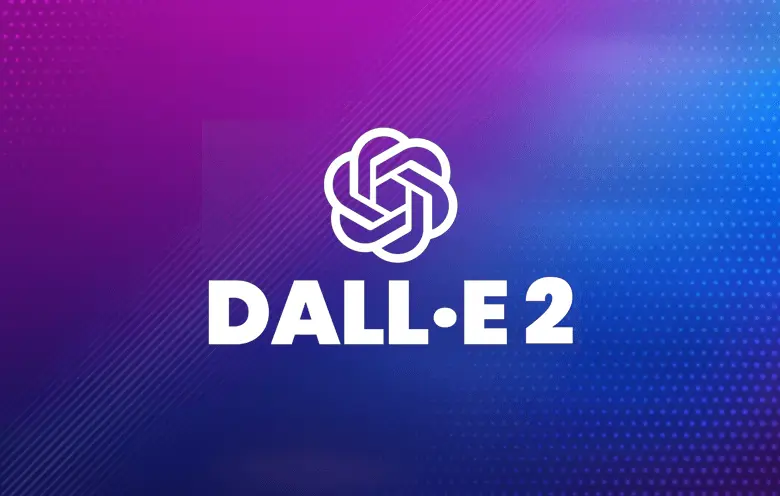
DALL-E 2, also developed by OpenAI, is an advanced AI model that can generate unique, high-quality images from textual descriptions. This innovative tool extends the capabilities of AI tools in the realm of creativity, allowing users to create visuals that might not even exist in the real world by simply describing them in text.
Key Features:
- Image Generation from Text: DALL-E 2 can create images from a wide array of textual descriptions, showcasing an impressive understanding of both objects and their relationships.
- Editability and Variations: Users can modify parts of existing images or generate variations of a given image, offering flexibility in creative processes.
- Realism and Detail: The images produced are detailed and realistic, with the ability to handle complex requests that involve intricate interactions between objects.
Applications:
- Creative Industries: Useful for designers, artists, and creatives who need to visualize ideas quickly.
- Marketing and Advertising: Generates engaging visuals for campaigns or social media based on specific creative briefs.
- Education and Research: Assists in creating visual aids for educational materials or scientific visualization.
Advantages:
- Streamlines the creative process by reducing the time and skill required to produce high-quality visuals.
- Enhances creative possibilities by allowing the generation of images that don’t yet exist, pushing the boundaries of art and design.
- User-friendly, making advanced image generation accessible to non-experts.
Challenges:
- Ethical concerns regarding the creation of misleading images or deepfakes require responsible use guidelines.
- Potential copyright issues when generating images similar to existing artworks or those that include trademarked elements.
3. Synthesia
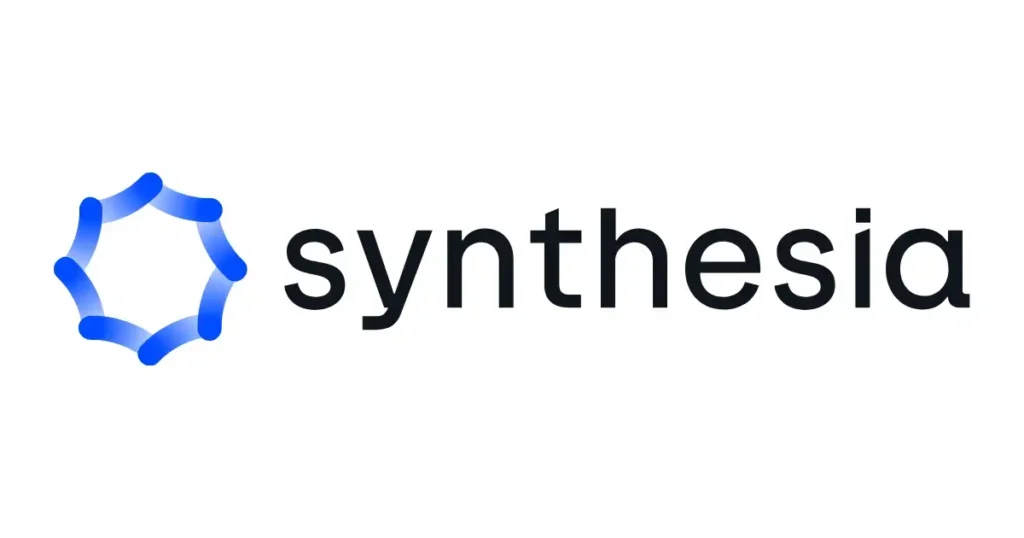
Synthesia is an AI-driven platform that revolutionizes video production by enabling the creation of synthetic media. This ai tools allows users to generate videos featuring AI avatars that speak and act according to a script provided by the user. It’s especially powerful for creating educational content, marketing videos, and corporate training without the need for live actors or extensive video editing skills.
Key Features:
- AI Avatars: Users can choose from a range of pre-designed avatars or create custom avatars that deliver lines with natural lip-syncing and facial expressions aligned with the spoken content.
- Multilingual Capabilities: Synthesia supports content creation in multiple languages, making it easy to produce localized video content for global audiences.
- Text-to-Video: Simply input text and choose an avatar to create a fully animated video where the avatar delivers the script as a seamless speech.
Applications:
- Corporate Training and Education: Enables companies and educators to create engaging training and instructional videos quickly and cost-effectively.
- Marketing and Advertising: Businesses can produce personalized video content for campaigns, social media, and customer engagement without on-location shoots.
- Customer service: Produce educational movies that walk viewers through typical problems or features of the product.
Advantages:
- Cuts down on the time and expenses related to producing videos the old-fashioned way.
- Facilitates scalable video content creation across different languages and formats without needing a diverse cast or crew.
- Enhances accessibility of video content production, democratizing media creation for smaller businesses and individual creators.
Challenges:
- While Synthesia can create realistic avatar-driven videos, the emotional range and subtleties of human actors are not fully replicable, which might limit its use in certain creative contexts.
- There are ethical considerations around the use of synthetic media, including the potential for misinformation or the creation of non-consensual media.
4. Grammarly
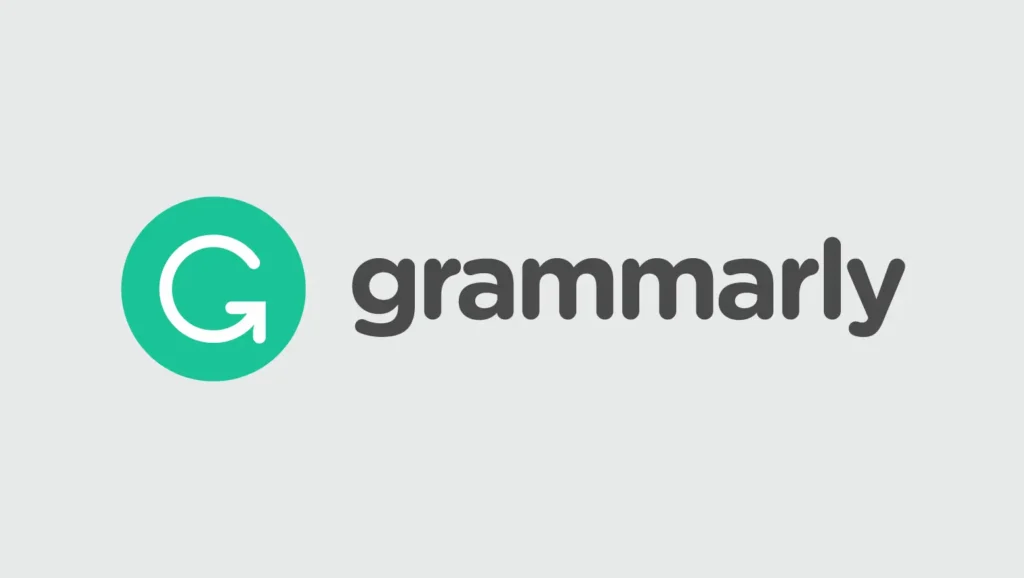
Grammarly is a widely used AI-powered writing assistant that helps users enhance their writing by providing suggestions on grammar, spelling, punctuation, style, and clarity. It operates across various platforms, including web browsers, Microsoft Office, and mobile devices, making it a versatile ai tools for anyone looking to improve their written communication.
Key Features:
- Real-Time Grammar and Spelling Corrections: Grammarly identifies and corrects grammatical errors, misspellings, and punctuation mistakes in real time.
- Style and Tone Suggestions: Offers advice on writing style and tone to match the intended audience and purpose, ensuring that the message is conveyed effectively.
- Plagiarism Detector: Checks written content against billions of web pages to ensure originality and prevent plagiarism.
Applications:
- Academic Writing: Assists students and researchers in producing error-free papers and dissertations.
- Professional Communication: Helps professionals craft clear and polished emails, reports, and presentations.
- Content Creation: Enables bloggers, marketers, and writers to produce high-quality, engaging content with consistent tone and style.
Advantages:
- Significantly improves writing quality and consistency across all types of written communication.
- Enhances productivity by reducing the time spent on editing and proofreading.
- Offers educational insights that help users understand their mistakes and learn from them, improving their writing skills over time.
Challenges:
- May not always capture the nuances of creative writing or highly technical content, which can limit its effectiveness in those contexts.
- Relies on a subscription model, which might be a barrier for users looking for a one-time purchase solution.
Grammarly is a valuable ai tools for anyone involved in writing, providing an extra layer of polish that can make a big difference in the clarity and professionalism of the text.
5. Copy.ai
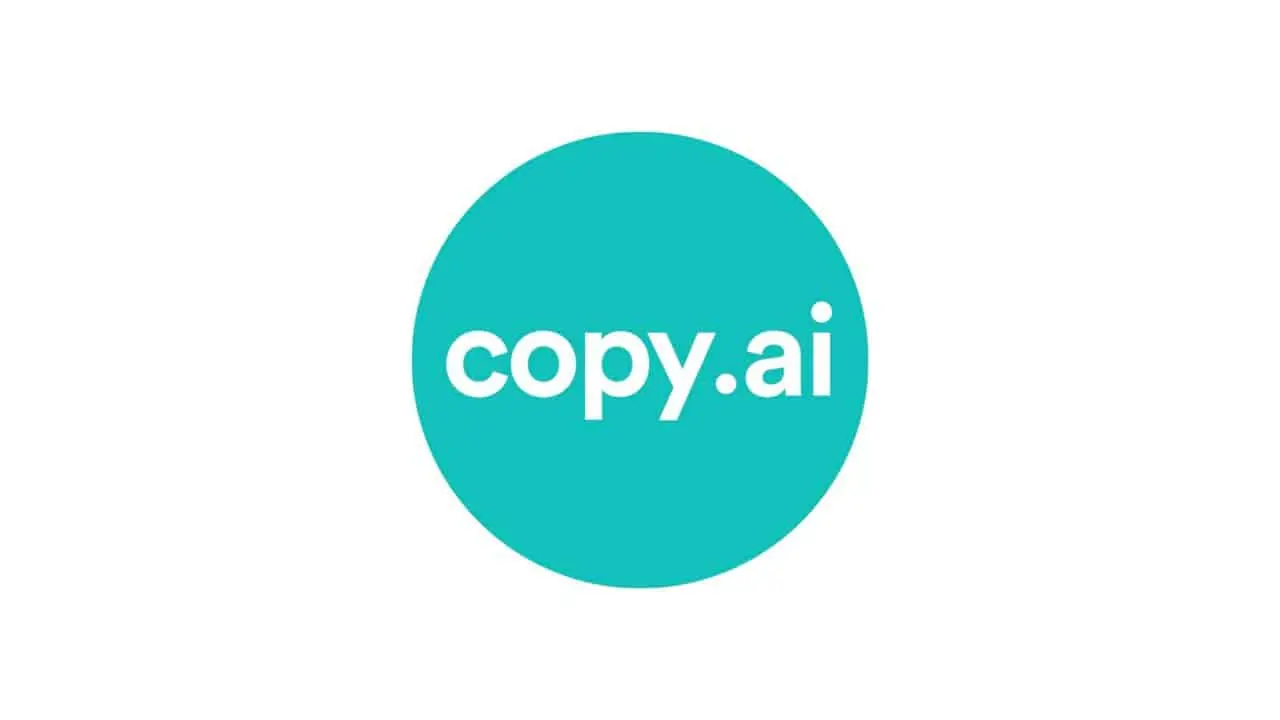
Copy.ai is an AI-driven tool designed to assist in content creation, particularly in generating marketing copy and creative content. Using advanced language models, it helps users quickly produce written content that ranges from blog posts and social media content to emails and product descriptions. This ai tools is particularly useful for marketers, entrepreneurs, and content creators who need to generate high-quality content rapidly.
Key Features:
- Diverse Content Templates: Copy.ai provides a variety of templates for different types of content, including blog intros, product descriptions, ad copy, and more, facilitating easy and quick content creation.
- Idea Generation: Helps brainstorm and generate ideas for content, overcoming writer’s block and inspiring creativity.
- Customization Options: Allows users to input tones, styles, and specific details, ensuring the output closely aligns with their needs and brand voice.
Applications:
- Marketing and Advertising: Generates compelling copy for campaigns, helping businesses engage their target audience effectively.
- E-commerce: Produces detailed and persuasive product descriptions, enhancing online sales efforts.
- Content Strategy: Assists in maintaining a consistent flow of content across various platforms, supporting SEO and digital marketing strategies.
Advantages:
- Accelerates the content creation process, enabling users to produce more content in less time.
- Supports non-native English speakers by providing high-quality, fluent text in English.
- Reduces creative fatigue by handling routine and repetitive writing tasks, freeing up creators for more strategic activities.
Challenges:
- While Copy.ai can generate functional and coherent text, the nuances of a brand’s unique voice might require additional tweaks and personalization.
- Dependence on AI for content creation can reduce the personal touch and may not always capture the depth of topics that require expert insight or detailed analysis.
Copy.ai is an excellent ai tools for boosting productivity in content creation and can be particularly valuable for individuals and businesses looking to scale their content output without significantly increasing their workload.
6. DeepBrain AI
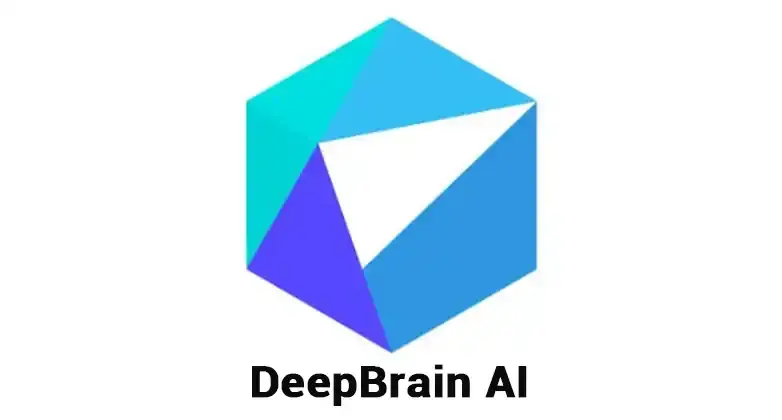
DeepBrain AI is a technology company specializing in artificial intelligence and deep learning. They are known for creating AI solutions that can synthesize and replicate human-like interactions, particularly through virtual human technology. This includes AI-powered synthetic media that generates realistic human avatars and voices for various applications, such as news delivery, customer service, and virtual representations.
Key Features:
- AI Human: Provides realistic virtual human avatars that can be used for video presentations, customer service, and more. These avatars are capable of speaking multiple languages with accurate lip synchronization and expressive facial movements.
- AI Studios: An easy-to-use platform where users can produce videos featuring AI humans. It’s designed for creating content quickly without the need for actual video shoots, utilizing only text inputs to guide the AI’s performance.
- Real-Time Interaction: Offers technology capable of real-time interactions, making it suitable for live customer support or real-time virtual presentations.
Applications:
- Broadcasting and Media: Used by media companies to create virtual anchors and reporters for delivering news and other content.
- Customer Service: Implements virtual agents that can handle customer inquiries 24/7 with consistent performance and minimal downtime.
- Corporate Training: Generates training videos featuring AI trainers, providing a consistent training experience across an organization.
Advantages:
- Enhances the scalability of video production by eliminating the logistical challenges and costs associated with traditional video creation.
- Provides a highly consistent and controlled output, ensuring brand messages are delivered precisely.
- Enables businesses to offer round-the-clock customer service through engaging and interactive AI representatives.
Challenges:
- While AI-generated humans are realistic, they might still lack the full range of emotional expressions compared to real humans, which can be critical in some interactive scenarios.
- Ethical considerations and public acceptance of synthetic media remain challenges, as there is potential for misuse or concerns about replacing human jobs.
DeepBrain AI stands out for its ability to merge cutting-edge AI technology with practical applications, offering significant benefits for industries requiring high-quality, scalable, and interactive content.
7. GitHub Copilot
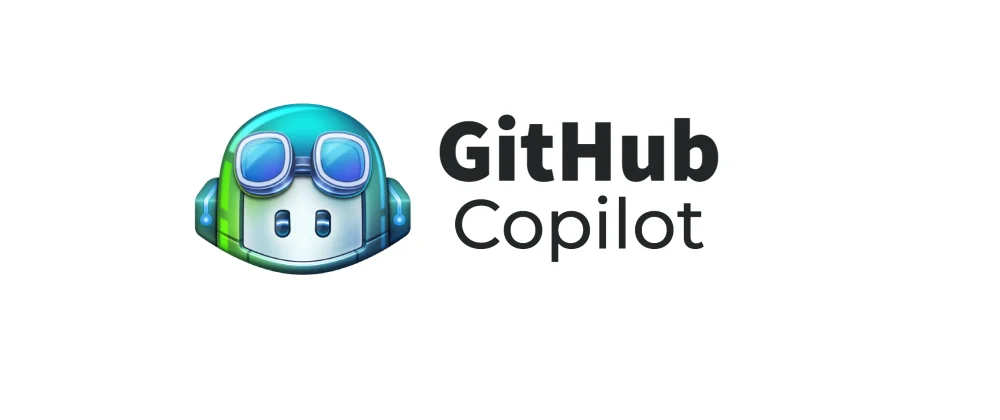
GitHub Copilot is an AI-powered code completion ai tools designed to assist developers by suggesting whole lines or blocks of code as they type. Developed by GitHub in collaboration with OpenAI, Copilot draws from a vast database of open-source code to provide contextually relevant suggestions, significantly speeding up the coding process and helping programmers solve complex problems more efficiently.
Key Features:
- Context-Aware Code Suggestions: GitHub Copilot analyzes the code you’re working on and offers suggestions for the next few lines, similar to auto-complete features in text editors but tailored specifically for coding.
- Supports Multiple Programming Languages: It is versatile and supports a wide range of programming languages including Python, JavaScript, TypeScript, Ruby, and more.
- Learning and Adapting: The ai tools learns from the user’s coding patterns and adapts its suggestions to fit the individual style and requirements of the project.
Applications:
- Software Development: Enhances productivity by providing real-time coding assistance, reducing the time spent on boilerplate code and debugging.
- Educational Ai Tools: Helps new programmers learn coding languages and best practices by showing them real-time, in-context examples.
- Code Review and Quality Assurance: Offers alternative coding approaches and highlights potential errors, supporting higher code quality and maintainability.
Advantages:
- Accelerates the development process by reducing the cognitive load on developers, allowing them to focus on problem-solving and higher-level design.
- Facilitates faster learning and onboarding for new developers by providing instant feedback and examples.
- Integrates seamlessly with Visual Studio Code, making it easily accessible to a large number of developers.
Challenges:
- The reliability of suggestions may vary, and developers need to review the AI’s recommendations to ensure they meet the project’s requirements and adhere to best coding practices.
- This raises concerns about the training data’s privacy, as it is trained on a vast corpus of public code, potentially leading to unintentional biases or vulnerabilities in suggestions.
GitHub Copilot represents a significant step forward in the use of AI in software development, offering a powerful ai tools that can transform how developers write code.
8. Midjourney

Midjourney is an independent research lab focused on developing AI systems for generating creative content. It is best known for its AI tools that specializes in creating images from textual descriptions. Similar to ai tools like DALL-E 2, Midjourney translates written prompts into vivid, artistic images, harnessing advanced AI models to explore the intersection of art and machine learning.
Key Features:
- Advanced Image Generation: Midjourney produces highly detailed and stylistically varied images based on textual descriptions, offering users the ability to generate visuals for a wide range of concepts and styles.
- Customization Through Parameters: Users can adjust various parameters in their prompts, such as style, detail, and color, allowing for greater control over the artistic output.
- Community-Driven Development: Midjourney integrates feedback from a vibrant community of users to refine its capabilities and broaden its application in different creative fields.
Applications:
- Creative Industries: Used by artists, designers, and creatives to conceptualize and visualize ideas quickly, providing a new ai tools for artistic expression.
- Marketing and Branding: Helps businesses create unique and compelling visual content for advertising, social media, and branding purposes.
- Education and Research: Used in academic settings to study the interaction between AI and human creativity, as well as to teach concepts of design and technology.
Advantages:
- Enhances creative processes by allowing rapid visualization of ideas and concepts that may be difficult to articulate or render manually.
- Opens up new avenues for artistic creation, enabling users to experiment with styles and forms that go beyond traditional methods.
- Provides an accessible platform for individuals and professionals to explore and create high-quality visual content without needing extensive artistic skills.
Challenges:
- Ethical and copyright concerns arise from AI-generated content, particularly regarding the originality of artworks and the potential for infringing on existing intellectual property.
- The interpretation of textual prompts can vary, leading to unpredictable results that may not always align with the user’s intent.
Midjourney’s ai tools represents a cutting-edge development in AI-driven creative technologies, offering both opportunities and challenges as it reshapes the landscape of visual content creation.
9.Character.AI
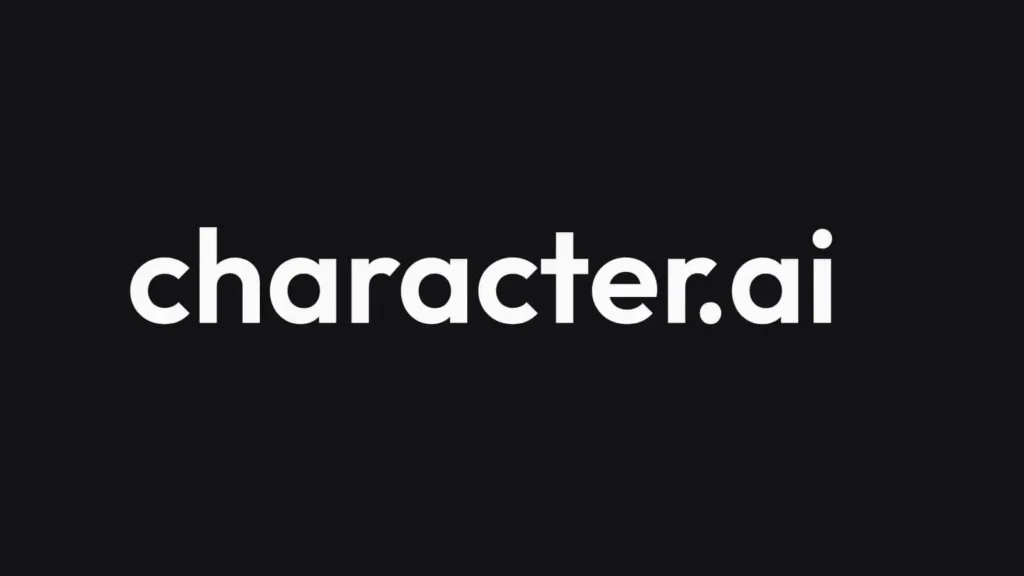
Character.AI is an innovative platform that leverages neural language models to create interactive characters. These AI-generated characters can engage in conversations, mimic human-like interactions, and adapt to the conversational context, providing a unique experience for users to interact with various fictional or non-fictional personas.
Key Features:
- Interactive AI Characters: Users can converse with a variety of characters designed to emulate personalities from literature, history, or custom user-created personas.
- Customization: Provides ai tools for users to create and train their own AI tools characters, tailoring interactions according to specific traits or knowledge bases.
- Contextual Awareness: The AI tools understands and responds based on the ongoing conversation, making interactions feel more natural and engaging.
Applications:
- Entertainment and Gaming: Enhances interactive storytelling and gaming experiences by allowing players to engage deeply with characters.
- Education: This can be used to create interactive educational ai tools where students learn through dialogue with historical figures or book characters.
- Customer Service: Deployed to handle interactive, persona-driven customer support, providing a more engaging user experience.
Advantages:
- Enhances user engagement through personalized and dynamic interactions.
- Offers educational and entertainment value by bringing characters to life with realistic dialogues.
- Supports creativity in content creation and character development.
Challenges:
- Managing the balance between character autonomy and accurate, appropriate responses can be challenging.
- There are concerns about misuse, such as creating characters for deceptive purposes or spreading misinformation.
10. AIXcoder
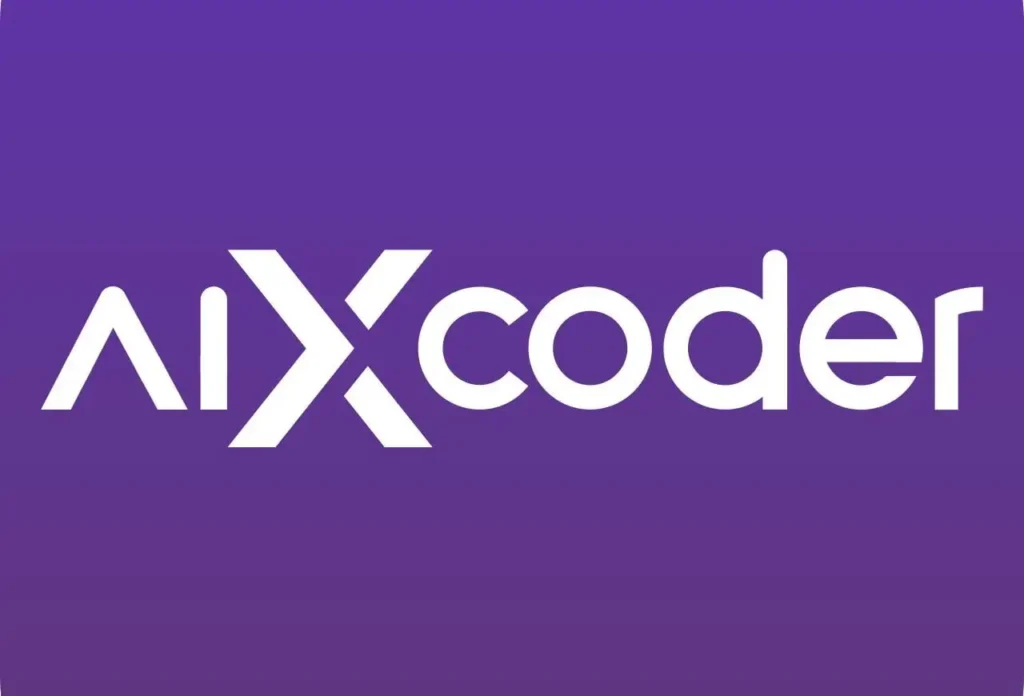
AIXcoder is an AI tools-powered code completion and assistance ai tools designed to enhance productivity for developers by providing intelligent coding suggestions. It operates within integrated development environments (IDEs) to analyze code in real time and offer recommendations that can help streamline the development process and reduce coding errors.
Key Features:
- Context-Aware Code Completion: AIXcoder uses machine learning algorithms to understand the context of the code being written and offers relevant suggestions that fit logically within the given codebase.
- Support for Multiple Programming Languages: The ai tools supports a variety of programming languages, making it versatile for different types of development projects.
- Code Refactoring and Optimization: Beyond simple code completion, AIXcoder provides suggestions for refactoring and optimizing code, helping to improve performance and maintainability.
Applications:
- Software Development: Assists developers by reducing the time spent on typing and searching for syntax or library functions, allowing them to focus more on solving business problems.
- Educational Environments: Acts as a learning assistant for students who are new to programming, providing real-time feedback and suggestions to enhance their coding skills.
- Code Review Processes: This can be used in code review settings to suggest improvements and ensure coding standards are met across the team.
Advantages:
- Increases developer efficiency by reducing repetitive coding tasks and minimizing syntax errors.
- Helps maintain a cleaner, more efficient codebase by suggesting optimal coding practices and refactoring opportunities.
- Facilitates faster onboarding and learning for new developers or those transitioning to new programming languages.
Challenges:
- Dependence on AI tools suggestions might discourage developers from deeply understanding the code, potentially leading to a gap in problem-solving skills.
- The accuracy of code suggestions can vary, requiring developers to critically evaluate AIXcoder’s recommendations to ensure they are appropriate for their specific use case.
AIXcoder is a useful ai tools for anyone involved in coding, from experienced developers looking to streamline their workflow to newcomers seeking guidance as they learn to navigate complex programming environments.
11. Gemini

Gemini is a cryptocurrency exchange and custodian that lets users purchase, sell, and store virtual currencies like ether and bitcoin. Founded in 2014 by Cameron and Tyler Winklevoss, Gemini has built a reputation for its emphasis on compliance and security, aiming to bridge the gap between traditional finance and the burgeoning world of cryptocurrency.
Key Features:
- Robust Security Measures: Gemini employs industry-leading security practices, including cold storage for the majority of assets, multi-signature technology, and a strong compliance framework.
- User-Friendly Interface: Offers a clean and straightforward user interface that caters to both novice and experienced traders.
- Regulatory Compliance: One of the first cryptocurrency exchanges to be fully regulated in the US, holding a New York State trust charter and adhering to stringent regulatory standards.
Applications:
- Cryptocurrency Trading: Supports a wide range of cryptocurrencies for trading, providing a platform for both retail and institutional traders.
- Asset Custody: Offers a secure storage solution for digital assets, serving individual investors, institutions, and businesses.
- Payment Services: Provides a platform for businesses to accept cryptocurrency payments, facilitating broader adoption of digital currencies.
Advantages:
- Provides a secure and regulated environment for cryptocurrency trading, reducing the risk of fraud and theft.
- Offers a suite of products including Gemini Earn, Gemini Pay, and Gemini Wallet, which enhance the utility of cryptocurrencies in everyday transactions.
- Engages in community and educational initiatives to promote a better understanding of cryptocurrency markets and technology.
Challenges:
- While offering a secure trading environment, the high level of regulation may limit the availability of certain innovative or emerging cryptocurrencies.
- Transaction and withdrawal fees can be relatively high compared to some other platforms, which might deter frequent trading.
Gemini stands out as a forward-thinking platform that not only facilitates the trading of cryptocurrencies but also strives to enhance the security and legitimacy of the digital asset industry.
12. ChatGPT-4
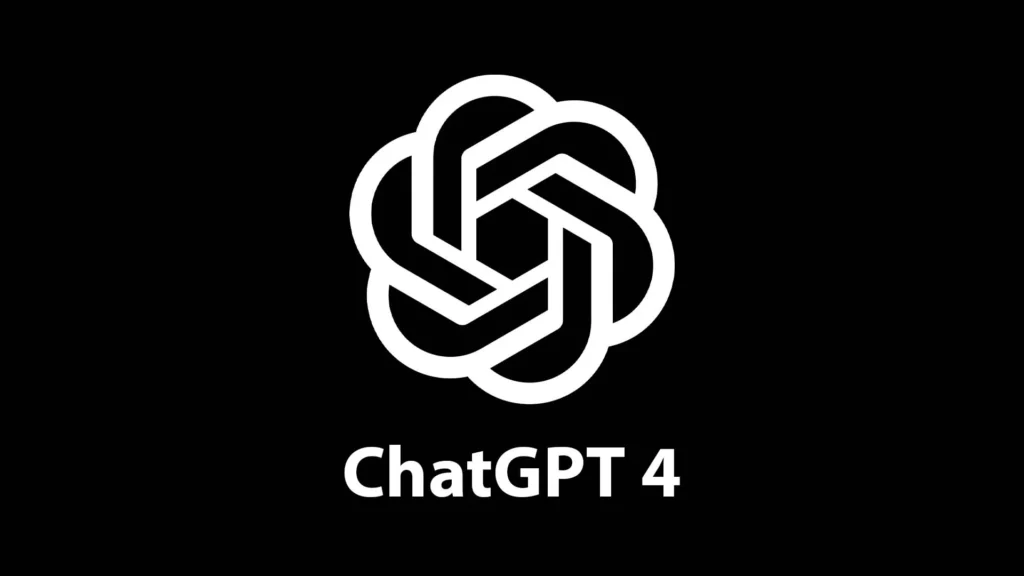
ChatGPT-4 is the fourth iteration of the Generative Pre-trained Transformer models developed by OpenAI, tools following the widely popular ChatGPT-3. This version marks a significant improvement in the model’s understanding and generating capabilities, enabling more nuanced and context-aware interactions. ChatGPT-4 can engage in conversations, answer questions, summarize texts, generate content, and more, with a greater understanding of subtleties in language and logic than its predecessors.
Key Features:
- Enhanced Understanding: ChatGPT-4 shows improved comprehension of complex queries and contexts, allowing it to handle more intricate conversations and provide more accurate responses.
- Greater Context Retention: It can maintain context over longer conversations, reducing the frequency of misinterpretations and the need for repeated explanations.
- Multimodal Capabilities: Unlike its predecessors, ChatGPT-4 can integrate both text and image inputs, providing more versatile responses and analyses.
Applications:
- Customer Support: Automates responses in customer service environments, handling common inquiries efficiently and accurately.
- Education: Assists in educational settings, providing explanations, tutoring, and interactive learning experiences.
- Content Creation: Helps writers, marketers, and creators generate articles, scripts, and creative content quickly and with high quality.
Advantages:
- Offers significant improvements in language understanding, making interactions smoother and more human-like.
- Provides broader coverage across different knowledge domains, enhancing its utility in professional and educational contexts.
- Reduces the time and resources spent on tasks like content creation and customer support.
Challenges:
- Despite improvements, there can still be instances where the AI tools misunderstands complex nuances or delivers incorrect information, necessitating oversight.
- Ethical concerns about AI tools in terms of data privacy, misinformation, and dependency continue to be relevant and require ongoing attention.
ChatGPT-4 represents a leap forward in natural language processing technologies, setting new standards for AI tools interactions and capabilities.
13. Descript
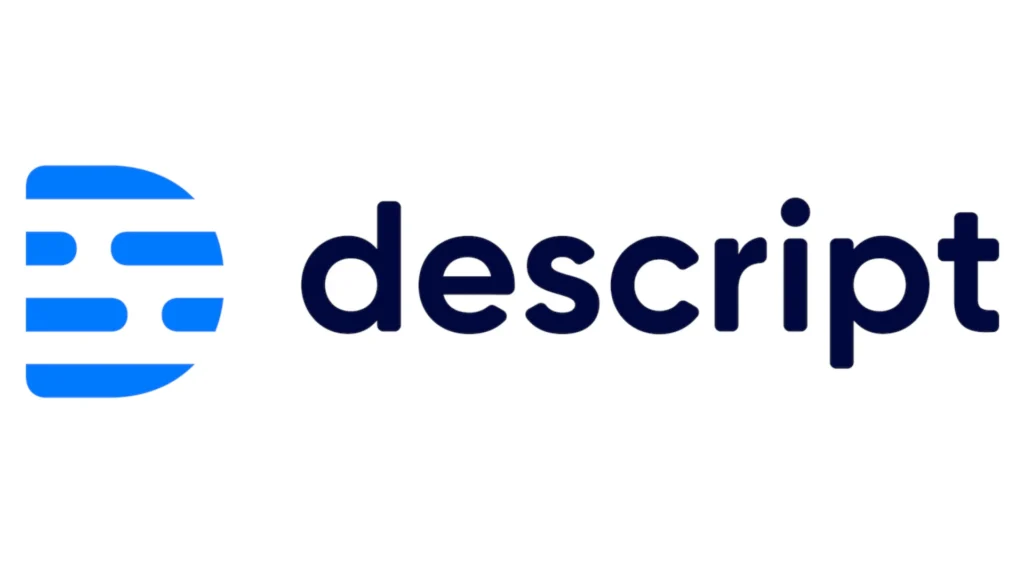
Descript is a powerful, all-in-one audio and video editing ai tools that integrates advanced AI tools technology to simplify the production process. It allows users to edit audio and video content as easily as editing text in a word processor. Descript is particularly popular among podcasters, video creators, and professionals in media production for its user-friendly interface and robust feature set.
Key Features:
- Overdub: One of the standout features of Descript, Overdub allows you to correct or change spoken words in an audio file by typing the new text, using AI tools to match the speaker’s voice and intonation.
- Multi-Track Editing: Supports editing of multi-track audio, which is ideal for podcast and video production where multiple audio sources are involved.
- Screen Recording: Includes built-in screen recording capabilities, making it easy to create tutorials or presentations directly from your desktop.
- Transcription: Automatically transcribes audio to text with high accuracy, enabling easier editing and content accessibility.
Applications:
- Podcasting: Streamlines podcast production from recording to editing and publishing, all within a single platform.
- Video Production: Simplifies video editing with timeline-based editing and features like auto-cutting that removes filler words and silences automatically.
- Educational Content: Useful for educators and trainers to produce high-quality instructional videos and tutorials with minimal effort.
Advantages:
- Dramatically reduces the time and effort needed for audio and video editing, making it accessible even to novices.
- Enhances the production quality with ai tools like filler word removal and voice cloning, improving the professional appeal of the final content.
- Facilitates collaboration with features that allow multiple users to work on a project simultaneously.
Challenges:
- Dependence on cloud processing can lead to privacy concerns and potential data security issues.
- Some features, like Overdub, require explicit ethical considerations and clear consent to avoid misuse in voice cloning.
Descript is transforming how audio and video content is produced, offering ai tools that combine simplicity with powerful editing capabilities.
14. Jasper
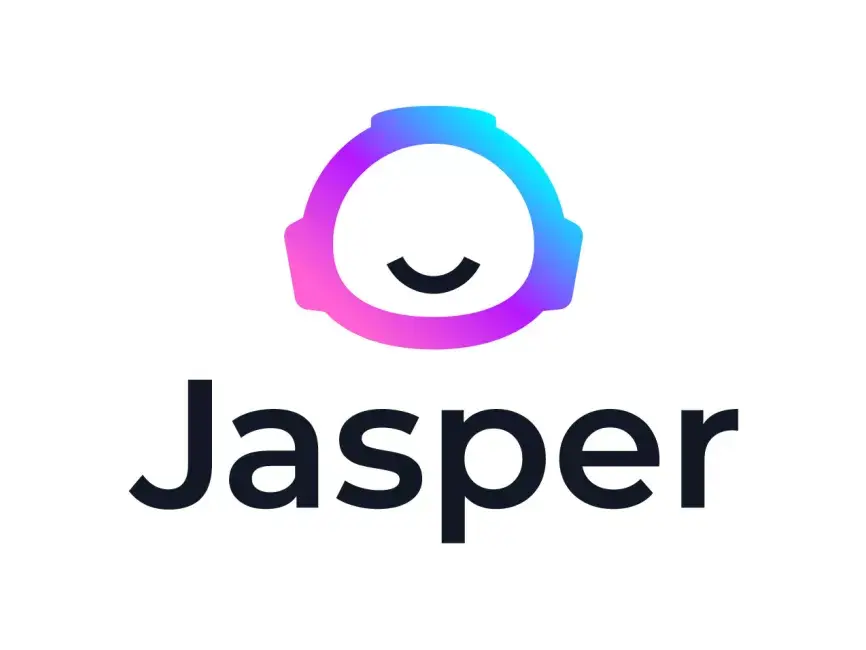
Jasper, formerly known as Jarvis, is an AI-powered content generation tools designed to assist in creating high-quality written content across a wide array of formats. It’s particularly favored by marketers, content creators, and businesses for its efficiency in producing engaging and optimized content quickly. Jasper integrates advanced language models to generate text that is not only grammatically correct but also tailored to specific tones, styles, and audience needs.
Key Features:
- Versatile Content Creation: Jasper can generate content for blogs, ads, emails, websites, and social media posts, among other formats.
- Tone and Style Customization: Users can specify the tone and style of the content, whether it’s professional, casual, persuasive, or informative, ensuring that the output aligns with their brand voice.
- SEO Optimization: Incorporates SEO best practices into content creation, helping users improve their search engine rankings and visibility.
Applications:
- Digital Marketing: Enhances online marketing efforts by generating consistent and appealing content that drives engagement and conversions.
- Content Strategy: Supports content strategists in maintaining a steady flow of quality content across various platforms.
- E-commerce: Produces compelling product descriptions and marketing copy that can help increase sales and customer interest.
Advantages:
- Increases content production speed, allowing teams to publish more frequently without compromising on quality.
- Helps overcome writer’s block by providing creative content ideas and drafts that can be refined and edited.
- Supports multilingual content generation, making it easier for businesses to expand into new markets without language barriers.
Challenges:
- While Jasper provides a strong starting point, the content often requires human editing to ensure it fully captures the nuances intended by the user.
- Dependence on AI tools for content creation might limit creativity or lead to generic outputs without significant human input.
Jasper is a powerful ai tools for anyone looking to scale up their content creation efforts efficiently, offering a blend of creativity, customization, and convenience.
15. Tabnine

Tabnine is an AI-powered code completion ai tools designed to help developers write code faster and more efficiently. It integrates seamlessly into various development environments, providing predictive text completions based on the context of the code being written. Tabnine supports a wide range of programming languages and is popular among developers for its ability to reduce coding errors and improve productivity.
Key Features:
- Deep Learning Model: Utilizes advanced machine learning algorithms trained on a vast corpus of code, allowing it to provide accurate and relevant code completions.
- Support for Multiple IDEs: Compatible with popular Integrated Development Environments (IDEs) like Visual Studio Code, IntelliJ IDEA, and more, ensuring that developers can use it within their preferred ai tools.
- Multi-Language Support: Offers code completion for a variety of programming languages, including JavaScript, Python, Java, C++, and others.
Applications:
- Software Development: Enhances the coding process by reducing the amount of typing required and helping to avoid syntactic and simple logical errors.
- Educational ai Tools: Assists new programmers in learning syntax and code structure by providing real-time suggestions and examples.
- Code Review and Debugging: Helps streamline the code review process by suggesting improvements and optimizations that can make the code cleaner and more efficient.
Advantages:
- Significantly speeds up the coding process by automating routine programming tasks.
- Helps reduce bugs in the development stage by suggesting correct code usage and practices.
- Learns from the individual coding patterns of the user, adapting its suggestions to fit the user’s style and preferences.
Challenges:
- While it provides helpful suggestions, reliance on Tabnine might reduce a developer’s engagement with the underlying code logic, potentially affecting learning and understanding.
- The quality of suggestions can vary depending on the complexity of the code and the specific use case, sometimes requiring manual oversight to ensure accuracy.
Tabnine is a valuable ai tools for developers looking to enhance their coding efficiency and accuracy, providing AI-driven insights and support across various stages of the software development lifecycle.
16. Claude

Claude is an AI language model developed by Anthropic, which is designed to be a helpful, honest, and harmless assistant in various conversational and text-based tasks. It builds on the advancements in generative language models, focusing on safety and usability in everyday applications. Claude aims to provide high-quality responses that are less prone to generating harmful or misleading information.
Key Features:
- Alignment with User Intent: Claude is designed to align closely with the user’s intent, offering responses that are relevant and helpful without diverging into unwanted directions.
- Safety and Ethical Considerations: Emphasizes reducing the risk of generating unsafe content, making it suitable for a wide range of users and contexts.
- High-Quality Conversational Abilities: Provides coherent and contextually appropriate responses, suitable for both casual interactions and more detailed informational queries.
Applications:
- Customer Support: Can automate customer service interactions, providing quick and accurate responses to common inquiries.
- Content Generation: Assists in generating text for articles, reports, and social media posts, ensuring the content is engaging and well-informed.
- Education and Learning: Serves as a tutoring and educational ai tools, helping students with explanations and learning materials in a conversational format.
Advantages:
- Focuses on ethical AI tools development, incorporating principles that prioritize user safety and model reliability.
- Offers versatility in application, capable of handling a variety of tasks that require nuanced understanding and generation of text.
- Enhances user experience by maintaining high standards of conversation quality, making interactions more natural and productive.
Challenges:
- As with any AI tools language model, there is still the potential for generating incorrect or biased information, necessitating occasional human oversight.
- Balancing performance with safety can limit the model’s responses in scenarios where more open-ended creativity or depth might be required.
Claude represents an evolution in the approach to designing AI tools language models, focusing on creating a user-friendly and ethically aware ai tools that supports a wide array of text-based tasks.
17. Cohere Generate

Cohere Generate is an AI language model developed by Cohere, a company focused on creating powerful natural language processing (NLP) technologies. The model is designed to understand and generate human-like text, enabling developers and businesses to integrate advanced NLP capabilities into their applications. Cohere Generate is built to offer scalable solutions for a variety of text-based tasks, from content generation to language understanding.
Key Features:
- Large-Scale Language Models: Utilizes large-scale transformer models that can process and generate text with a deep understanding of language and context.
- Ease of Integration: Provides a straightforward API that developers can use to integrate the model into websites, applications, and other software systems.
- Customizable Outputs: Allows users to tailor the style, tone, and format of the generated text to meet specific needs and preferences.
Applications:
- Content Creation: Assists in generating articles, blogs, and marketing copy, helping creators maintain a consistent flow of high-quality content.
- Customer Interaction: This can be deployed in chatbots and customer service platforms to handle inquiries with responses that are coherent and contextually appropriate.
- Language Translation and Understanding: Supports applications requiring translation or sophisticated language understanding, enhancing accessibility and user engagement.
Advantages:
- Facilitates the rapid development of NLP applications without the need for extensive machine learning expertise.
- Enhances user engagement through personalized and contextually relevant text generation.
- Supports multiple languages, making it versatile for global applications.
Challenges:
- Dependence on the quality of training data can influence the accuracy and relevance of the text generated, requiring careful oversight and tuning.
- Managing the balance between generalization and customization can be complex, especially when tailoring outputs to specific industries or cultural contexts.
Cohere Generate is particularly notable for its flexibility and ease of use, making advanced NLP capabilities accessible to a broader range of developers and businesses.
18. ElevenLabs

ElevenLabs is a groundbreaking AI tools technology company known for its voice synthesis and cloning capabilities. It specializes in creating realistic and expressive synthetic voices using advanced machine-learning techniques. This technology is particularly useful for content creators, media companies, and businesses that require high-quality voiceovers without the need for human actors, facilitating the production of accessible and localized audio content.
Key Features:
- Voice Cloning: Allows users to clone any voice from a short audio sample, enabling the creation of voiceovers that sound like the original speaker.
- Real-Time Voice Manipulation: Provides ai tools to adjust the tone, pitch, and speed of the synthetic voice, offering flexibility in how the content is presented.
- Multilingual Support: Supports multiple languages, making it possible to generate voice content for diverse audiences without language barriers.
Applications:
- Media Production: Used by filmmakers, podcasters, and video creators to produce voiceovers for various types of content, including documentaries, commercials, and entertainment media.
- Accessibility Features: Helps create audiobooks and accessible media for visually impaired users, ensuring content is available in a format that is convenient for them.
- Corporate Training: Generates voice-based training materials that can be customized to fit different regional needs and languages.
Advantages:
- Reduces costs and logistical challenges associated with traditional voice recording, such as hiring voice actors and booking studios.
- Enhances content personalization and localization, allowing businesses to easily adapt their materials for different markets.
- Improves accessibility of content by providing high-quality voice synthesis for translations and readability enhancements.
Challenges:
- Ethical considerations around consent and misuse, especially concerning the cloning of voices without explicit permission from the original speaker.
- Quality and naturalness can vary depending on the complexity of the text and the emotions required, which might not fully replicate the nuances of a human voice.
ElevenLabs is at the forefront of synthetic voice technology, offering innovative solutions that can transform how audio content is created and consumed.
19. Figstack

Figstack is an AI-powered development ai tools designed to enhance the productivity of software developers by providing code understanding and automation capabilities. It integrates directly into the coding environment, offering features like code translation, documentation, and debugging assistance. By leveraging advanced machine learning models, Figstack aims to simplify complex coding tasks and reduce the time developers spend on debugging and researching.
Key Features:
- Code Translation: Figstack can translate code snippets between different programming languages, helping developers who are working with multi-language codebases or learning new languages.
- Instant Documentation: Generates documentation for code snippets on the fly, clarifying functionality and usage without the need for extensive searching.
- Debugging Assistance: Provides insights into code errors and offers suggestions for fixes, streamlining the debugging process.
Applications:
- Software Development: Enhances the efficiency of coding workflows, particularly in environments where quick adaptation to different technologies is required.
- Educational Purposes: Assists learners by providing immediate explanations and translations of code, making it easier to understand new programming concepts.
- Code Maintenance: Helps maintain and update legacy code by offering easy-to-understand documentation and translation into modern languages.
Advantages:
- Significantly reduces the time spent on understanding and integrating different segments of a codebase, especially when working across multiple programming languages.
- Enhances learning and adoption of new programming languages through instant code translation and documentation.
- Improves code quality by providing immediate debugging help and ensuring that code is well-documented and easier to maintain.
Challenges:
- The accuracy of code translations and the relevance of debugging suggestions can vary, requiring developers to review and adjust the outputs carefully.
- Dependence on the ai tools may potentially limit deeper engagement with coding principles, particularly for new developers who might rely too heavily on automation.
Figstack represents a significant step forward in AI-assisted software development, focusing on making coding more accessible and less time-consuming.
20. DALL-E 3

DALL-E 3 is the third iteration of OpenAI’s groundbreaking AI tools image generation model. It builds upon the capabilities of its predecessors, DALL-E and DALL-E 2, by offering more refined and high-resolution image outputs. This advanced model is designed to convert textual descriptions into detailed images, enabling creators, designers, and marketers to visualize concepts and ideas with unprecedented clarity and creativity.
Key Features:
- Enhanced Image Quality: DALL-E 3 generates images with higher resolution and greater detail compared to earlier versions, making it suitable for professional-grade applications.
- More Accurate Interpretation of Prompts: Improved algorithms ensure that the images generated more closely match the intricacies and specifications of the input prompts.
- Expanded Creative Possibilities: The model supports a broader range of styles and can handle complex scenarios and compositions with ease.
Applications:
- Creative Industries: Used by artists and designers to quickly prototype visuals, explore different artistic styles, and bring imaginative concepts to life.
- Marketing and Advertising: Helps marketers create compelling and unique visual content tailored to specific campaigns or branding efforts.
- Educational ai Tools: Provides visual aids and illustrations for educational materials, enhancing learning experiences across various subjects.
Advantages:
- Significantly speeds up the creative process, reducing the time and cost associated with traditional methods of visual content creation.
- Offers ai tools for limitless creative exploration, allowing users to experiment with ideas that would be difficult or impossible to realize otherwise.
- Facilitates the production of diverse content, from realistic images to fantastical creations, catering to a wide range of needs and industries.
Challenges:
- Ethical considerations regarding the creation of realistic images, including potential misuse for creating misleading information or deepfakes.
- Managing the balance between artistic freedom and copyright concerns, as the ai tools can generate images that might inadvertently resemble existing copyrighted artworks.
DALL-E 3 represents a significant leap forward in the field of AI-driven creative ai tools, pushing the boundaries of how machines can assist in the artistic and creative processes.